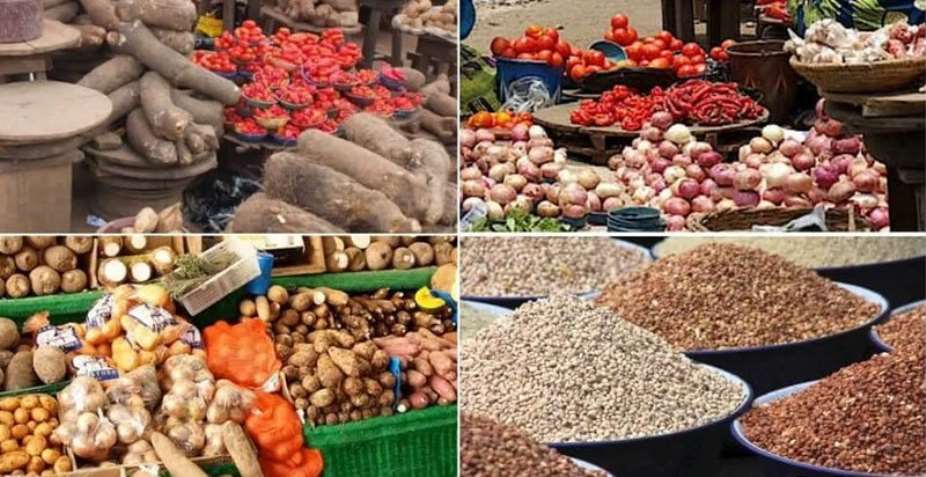On one of my few escapades, I came across a young girl who seemed particularly depressed. I decided to ask her what the matter was. She replied that because costs had increased, she was unable to purchase her favourite biscuit, which she had purchased two days earlier.
That is the way things are right now in Ghana. The increase in food prices is periodically getting worse. The inflation rate in Ghana has increased to its highest point in more than 18 years.
Since April, food costs have risen sharply. Food and non-alcoholic beverage inflation in Ghana increased by 26.6 percent in April 2022 versus the same month in 2021. The year-over-year rate in April 2022 was 4.2 percent higher than it was the month before, when it was 22.4 percent.
The annual inflation rate in Ghana increased from 27.6 percent in May to 29.8 percent in June of 2022, breaching the upper limit of the central bank's goal range of 6 percent to 10 percent for ten months. This is the highest annual inflation rate for Ghana since 2004.
The global pandemic, COVID-19, had an impact on people's quality of life because there was less manufacturing of commodities as a result of the lockdown and the speed at which the virus travelled around the world. In Ghana, the virus has damaged many enterprises. And the impact on the nation's economy has persisted to this day.
in line with the Russia and Ukraine conflicts, which also jeopardized Africa's food security by disrupting commodity imports and leading to a shortage of fertilizer for crops. These two nations are well known for their significant contributions to the supply of the world commodity markets.
And Ghana has felt the effects of this greatly. Ghana really imports more products than it sells.
The cost of food in Ghana automatically rises as transportation costs rise. Ghana's inflation rate is now higher than it was in 2020. Among other things, there are imports of sugar and flour. These products are made in relatively small quantities. And it makes sense that when transportation costs rise, food prices will follow suit.
The following findings showed that the rapid growth in population, declining soil fertility, inadequate irrigation systems, bad roads, and improper agricultural practices were among the reasons that posed a threat to the provision of food supplies.
The cost of several important foods has increased. The price of maize has increased and, as a result, the cost of chicken feed has gone up nationwide. This has increased along with other meals, including rice, milk, tomatoes, fish, and groundnuts, among other items.
The impact of these circumstances has exposed us to a higher cost of living, and salaries paid in some workplaces have not increased either. How long will it take for us to recover? What is the government doing to reverse these issues? These food crises have heavily affected senior high schools, and the impact is noticeable.
I ask again, how long will it take for us to recover?
Amanda Atunah is the 2022 CSA Student Online Journalist of the Year and a student at the Ghana Institute of Journalism (GIJ).





 Avoid pre-registered SIMs, buyer and seller liable for prosecution – Ursula Owus...
Avoid pre-registered SIMs, buyer and seller liable for prosecution – Ursula Owus...
 Election 2024: Mahama has nothing new to offer Ghanaians, Bawumia is the future ...
Election 2024: Mahama has nothing new to offer Ghanaians, Bawumia is the future ...
 OSP files fresh charges against ex- PPA Boss
OSP files fresh charges against ex- PPA Boss
 Withdraw unreasonable GH¢5.8m fine against former board members – ECG tells PURC
Withdraw unreasonable GH¢5.8m fine against former board members – ECG tells PURC
 Akroma mine attack: Over 20 armed robbers injure workers, steal gold at Esaase
Akroma mine attack: Over 20 armed robbers injure workers, steal gold at Esaase
 Those who understand me have embraced hope for the future — Cheddar
Those who understand me have embraced hope for the future — Cheddar
 Ghana will make maiden voyage into space should Bawumia become President — Chair...
Ghana will make maiden voyage into space should Bawumia become President — Chair...
 Train crash: Despite the sabotage, we shall not be deterred and will persevere —...
Train crash: Despite the sabotage, we shall not be deterred and will persevere —...
 Tema-Mpakadan railway project a perversion of the original viable concept design...
Tema-Mpakadan railway project a perversion of the original viable concept design...
 Train crash: Elsewhere, everyone involved in the test will either be fired or re...
Train crash: Elsewhere, everyone involved in the test will either be fired or re...
